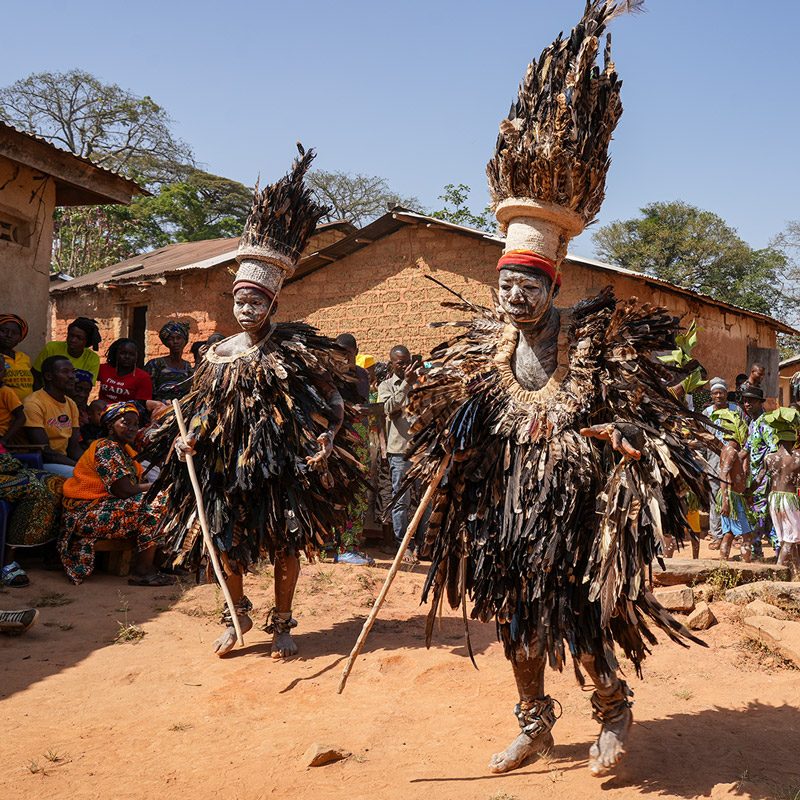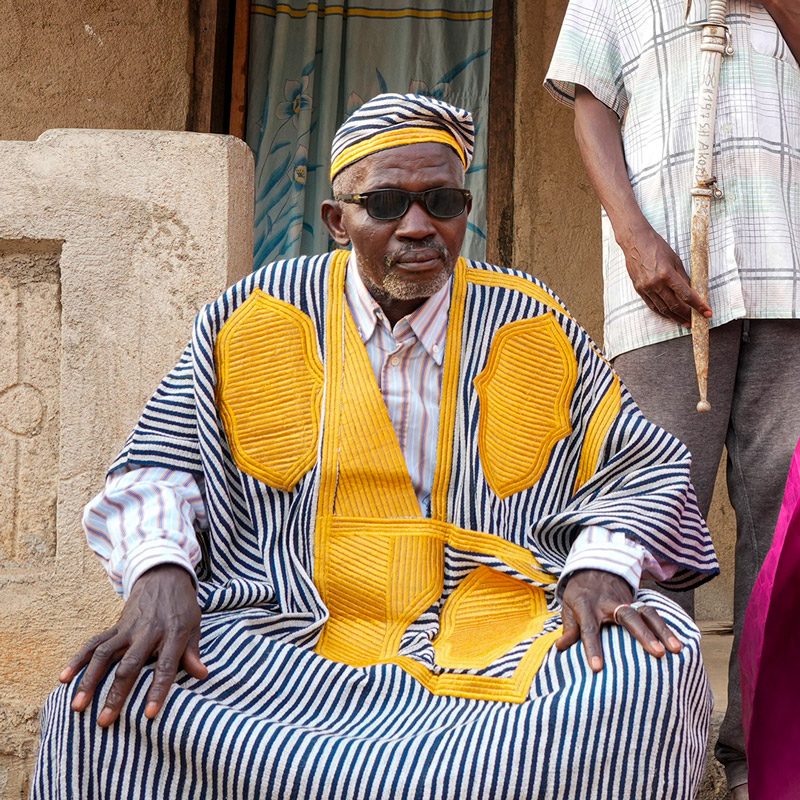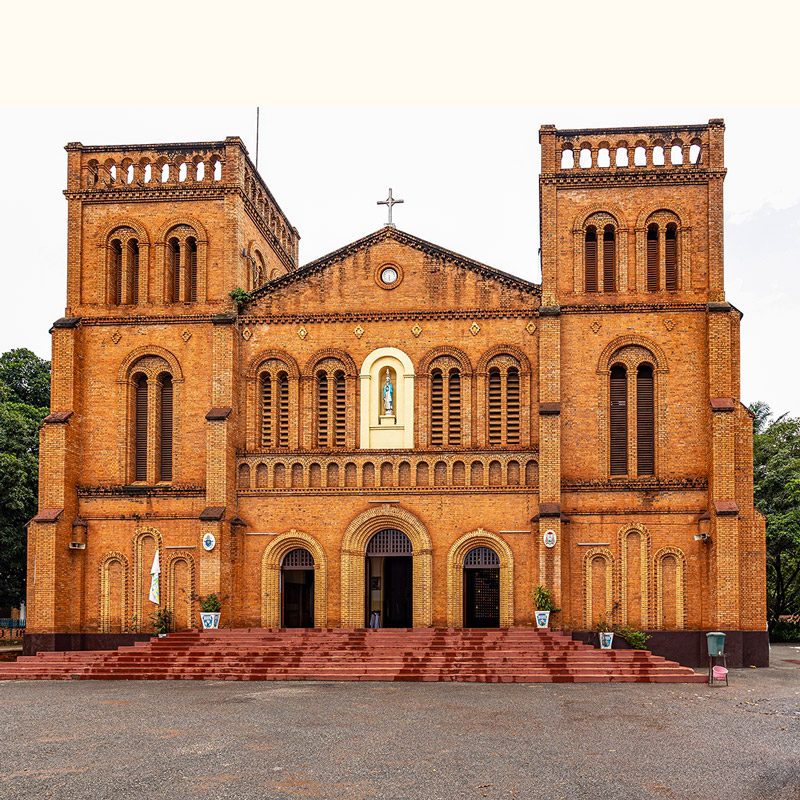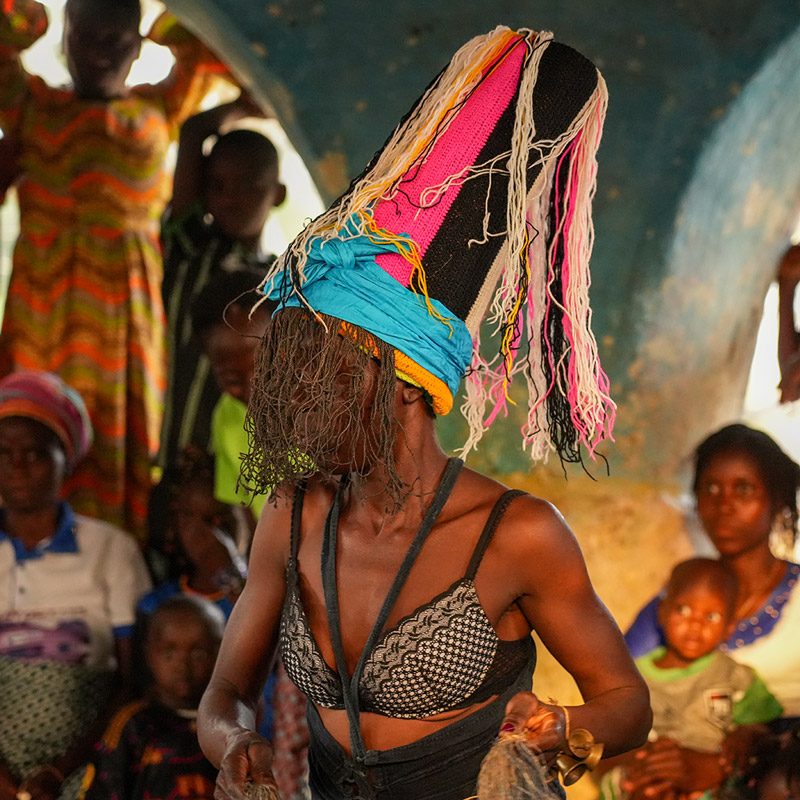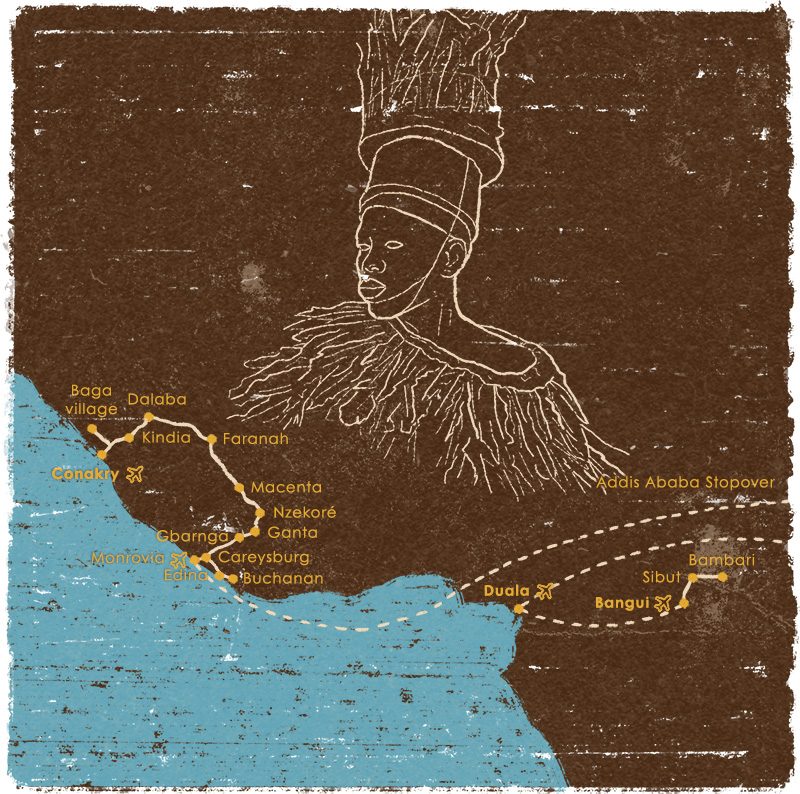Discover the highlights of this trip to Guinea, Liberia and the Central African Republic
We will visit the Baga tribe (Guinea)
Our goal will be to learn about the Baga people and witness a D’mba masquerade. The Baga people lived along the western coast of Guinea, and they reflected this in their artwork. The mask has linear patterns carved into its surface that refer to this agricultural state of mind when the mask is viewed in a performance. These geometric designs symbolize the hope for plentiful rain for the coming season and fertile crops to harvest, while also alluding to affection and cooking, both qualities seen by women in this time of motherhood. The D’mba mask portrays a mature woman, an icon of motherhood. The dancer holds the mask by the front legs and looks through small eyeholes between D’mba’s breasts. The mask is normally worn for special occasions such as marriages, funerals and harvest celebrations.
We will meet the Fulani people of Dalaba (Guinea)
Dalaba is the cultural capital of the Fulani people in the Futa Jalon region. It is a theocratic state founded in 1727 by a Fulani jihad that conquered the region. We will visit the old hay mosques around Dalaba and some Fulani villages where the original aristocratic female hairdos are still used, and we will have a meeting with the elders in the ‘Case à Palabre’ (Speech House), where problems used to be resolved. It is a unique work of Fulani art.
We will witness the Birdmens' dance (Guinea)
In a traditional Toma village near Macenta, we will have the opportunity to witness the Wonileghaghi ceremony, also known as the Birdmens' dance. This is a unique cultural spectacle that can only be found in this part of Guinea.
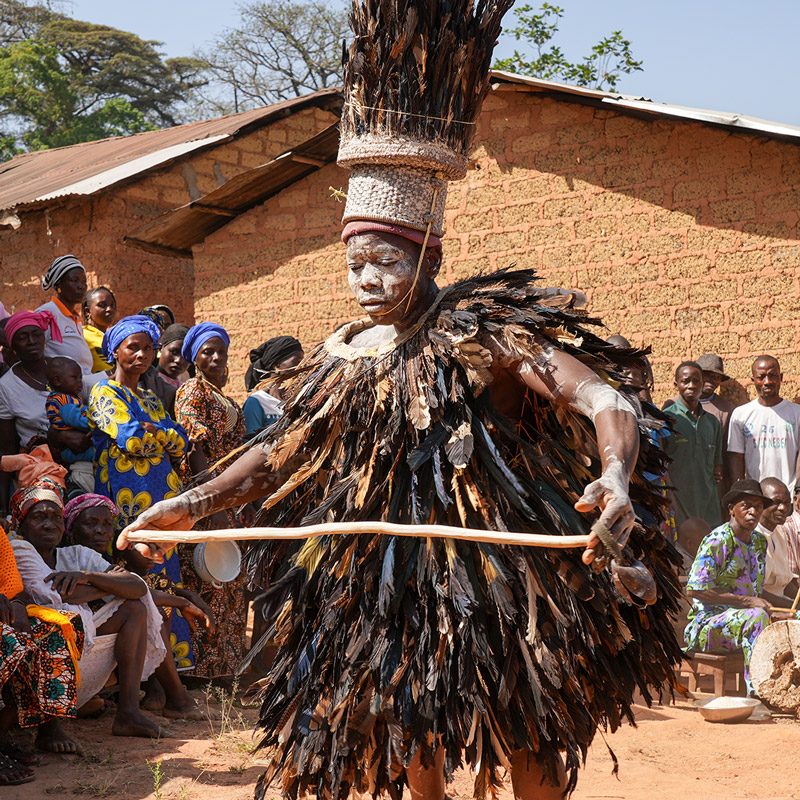

We will admire different Kpelle masked dances (Guinea)
During our visit to Guinea, we will attend several masked dances of the Kpelle tribe. Also, we will have the privilege of meeting the Kpelle king and visiting his compound. In addition, we will witness another masked dance in a village of the Guerze tribal group (related to the Kpelles).
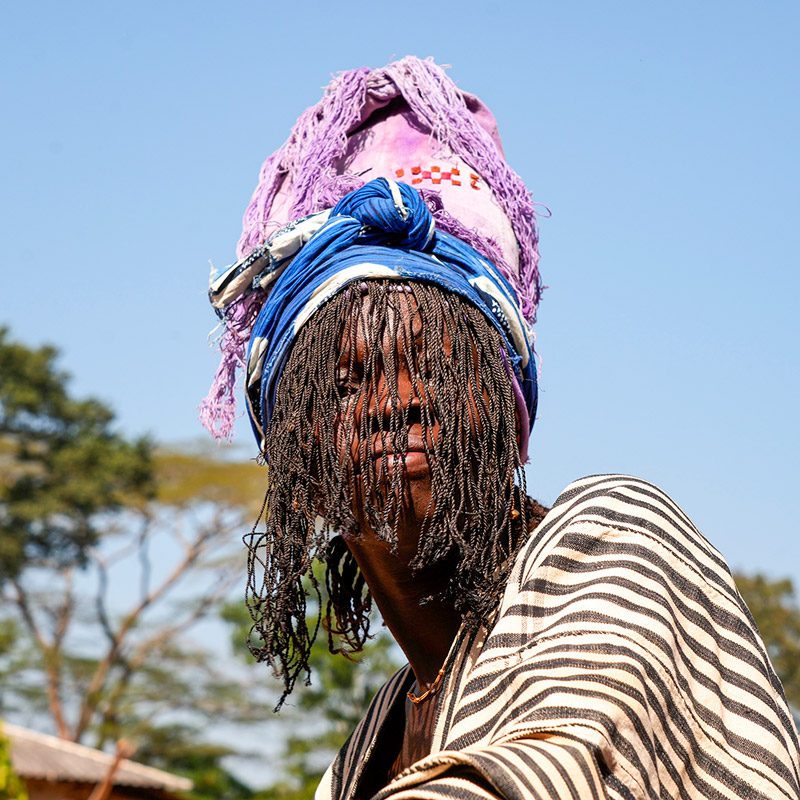
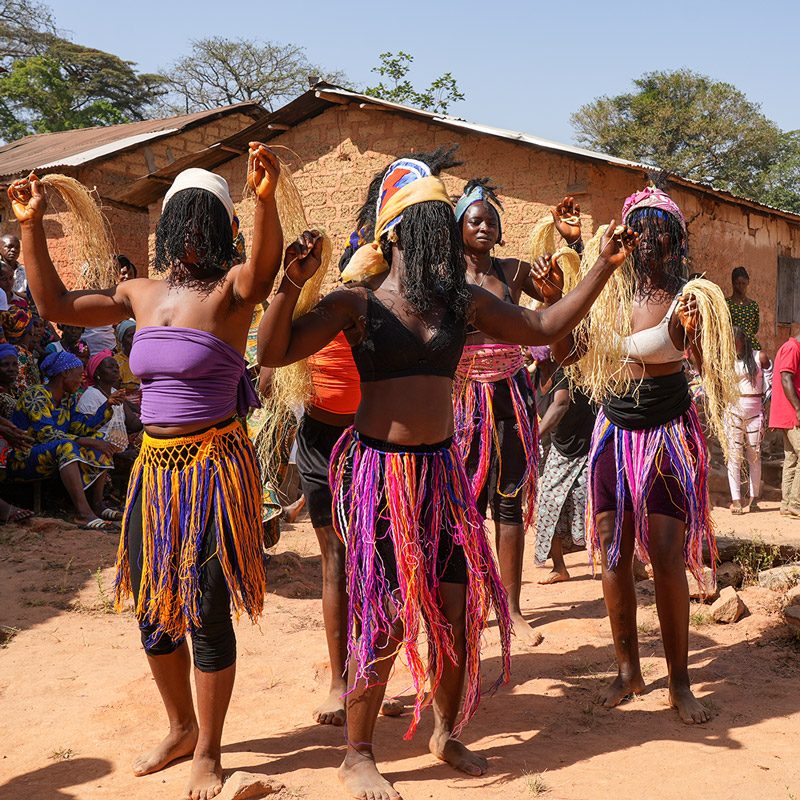
We will delve into the history of the Americo-Liberian territory (Liberia)
Americo-Liberians are Liberians of African American descent. They trace their ancestry to freeborn and formerly enslaved African Americans who immigrated to Liberia in the 19th century. In 1822, the American Colonization Society established the Liberian colony on the West African coast to send freeborn African Americans and manumitted slaves back to the African continent. Numerous settlements were established along the coast as thousands of immigrants (about 12,000 in total) made the journey across the Atlantic throughout the 19th century. Until 1980, they controlled Liberia politically and economically by subduing the native tribal population. This situation of internal colonization developed into a military coup and, subsequently, into a bloody Civil War. We will visit the old ‘Kongo-American’ style houses and meet descendants of these Americo-Liberian families in villages such as Careysburg and Bensoville, the hometowns of the last Americo-Liberian president, William Tolbert. Also, we will enjoy the art, architecture and anthropological heritage of this unique community in Africa.
We will witness the Ganza or Mandjia ceremony of the Banda tribe (Central African R.)
We will have the opportunity to experience the Ganza or Mandjia ceremony on the outskirts of Bambari, in the Central African Republic. This ceremony rarely happens nowadays due to the influence of Islam and Christianity, which see these Animistic rituals as backward and primitive. Ganza young men dress in a very particular way during their circumcision ceremony. We will see the dances related to the ceremony but not the circumcision in itself, only Banda-initiated men are allowed to be present during the act. Music and dances will happen, and we will be able to chat with the elders about the Banda culture.
Sande rite of passage of the Bassa people (Central African R.)
During this trip, we will attend the Sande ceremony (female rite of passage). The Sande secret society of the Mande-speaking peoples is an important example, because its religious vision and political power extend across Liberia and Sierra Leone. The Sande initiates girls by teaching them domestic skills and sexual etiquette, as well as religious significance.
© Photos by Siobhan Lavery.
► Download the itinerary for this trip to Guinea, Liberia and the Central African R.
Click on the button below to easily access the download form for the itinerary for this trip to Guinea, Liberia and the Central African Republic.
